Asphalt shingles vs. metal roofs: which material should you choose?
The finishing component of any building project, but perhaps one of the most important, is selecting and installing the proper roof. Beyond completing the structural integrity of the building below, as it prevents moisture penetration that can shorten the lifetime of framing and other water-sensitive components, roofs help to provide climate control features as well as aesthetic appeal. There are many factors that go into determining the appropriate roofing material, including cost, longevity, resistance to corrosion and algae growth, sound dampening capacities, UV reflection, resistance to wind and rain damage, etc. Two of the most popular and universally applicable roofing materials are asphalt shingles and metal roofs. Below, we offer some clarification and guidance on the compared advantages and disadvantages of both systems and whether roofing shingles vs. metal roofs are better for your next project.
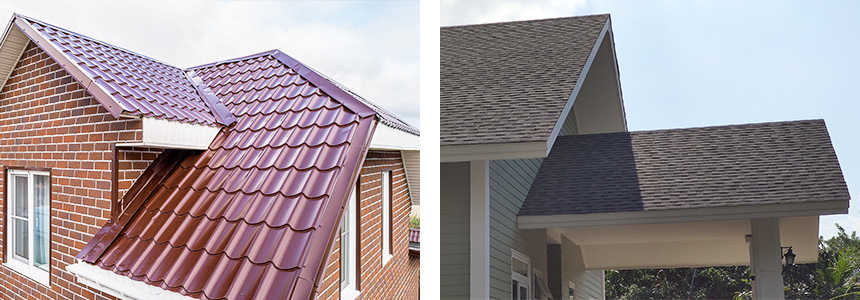
Both asphalt shingles and metal roofs are used on residential and commercial properties. These materials have been used extensively over the years and throughout different regions, given their architectural merits as well as their varying features to improve external and internal building conditions. Both have distinct properties that allow for certain performance features and make each more applicable for certain conditions.
Roofing shingles
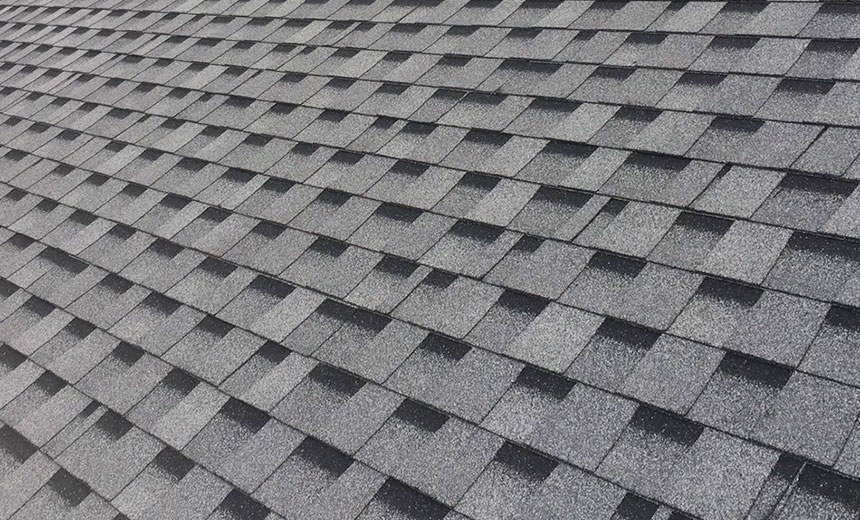
The base of roofing shingles is a fiberglass mat embedded between two layers of asphalt. The fiberglass provides structural integrity while the asphalt provides weather and water resistance; increasing the density of the fiberglass as well as the quality of the bitumen compound improves the overall durability and longevity of the shingle. Other components of asphalt shingles include basalt granules for color located on the top surface of the bitumen and underside protection that can include adhesive strips to improve wind and water resistance. Shingles come in single as well as multilayer formations, with multiple layers helping to increase the service life of the material as well as providing a more three-dimensional appearance.
Metal roofing

Metal roofing may seem like a fairly simple concept, but there are various nuances to the different materials one can use for a metal roof. The most popular metal roofing material is galvanized steel or steel that is dipped in molten zinc, which helps to prevent corrosion that would otherwise occur when the iron is exposed to moisture and oxygen. Galvanized steel roofs can be left in their natural color or painted to increase attractiveness. Aluminum roofs are another popular option, with the tradeoff being decreased potential for corrosion with an increased price. Aluminum is lighter than galvanized steel, which offers greater structural versatility but also can lend it to denting. Copper is the longest lasting of any metal roofing material but is the most expensive. Copper is left unpainted, is fastened with copper nails and allowed to oxidize to create a natural patina. You can also find terne roofs, which is tin compressed between rolled steel, as well as zinc roofs, which has slightly lower longevity than tin roofs given that it is naturally resistant to oxidizing.
Installation procedures
Aside from the material composition, the main differences in roofing shingles vs. metal are how the materials are fastened to the roof and how they perform once fastened. Shingles are generally installed on roofs by either torching or nailing, with combinations of torching and nailing being recommended for extra security for roofs with inclines greater than 60 degrees. Beneath the shingles, the special underlayments for nailing or torching applications help to improve shingle adhesion while preventing water penetration, which is especially true for self-adhesive roofing membranes used in the nailing method. Asphalt shingles and membranes are all applied directly to the roof decking.
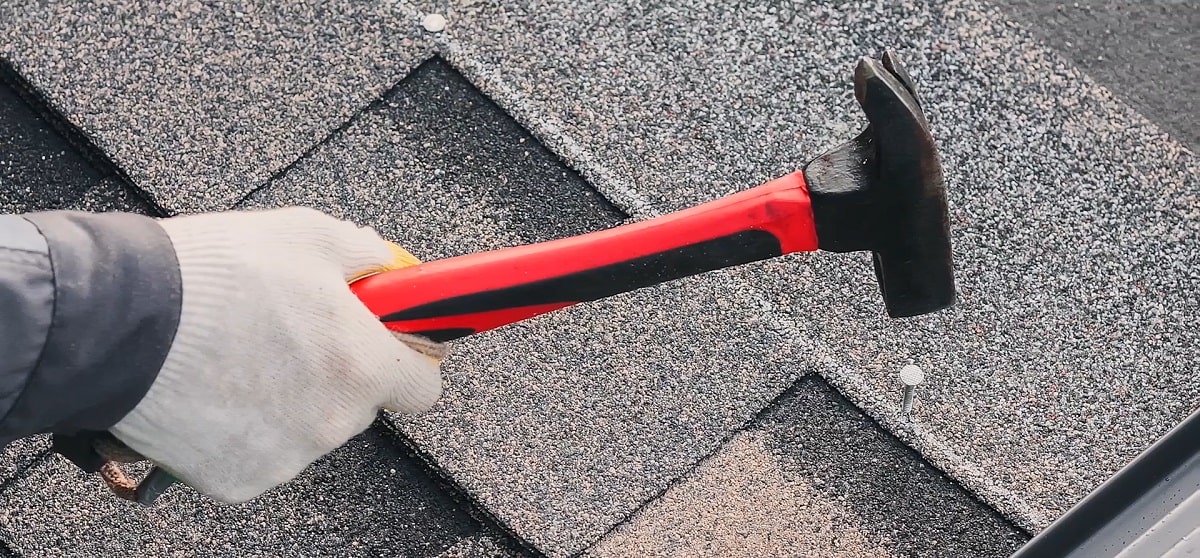
Metal roofs can be applied without roof sheathing depending on the joist spans and rigidity of the metal being used. In the case of galvanized steel, however, bitumen or synthetic underlayment is generally recommended for metal roofs as it reduces the likelihood of water penetration, improves insulation, reduces condensation and slightly negates noise transmission from the roof. Metal roofing is generally installed in large panels to avoid seams where water can penetrate, with the hips, eaves and ridges of a roof being protected by caps and trim to prevent water penetration while also allowing built-up vapor to escape.
Pros and cons of roofing shingles
There are many advantages to using high-quality roofing shingles. Properly installed roofing shingles are wind and water-resistant, ensuring a long life for the material as well as any structure beneath the roof. Shingles are lightweight and very convenient to transport in addition to easy to install, making for faster roof installations with decreased labor costs. In the event that a shingle becomes damaged, they are easy to replace individually rather than removing large sections of the roof. Roofing shingles have a wide range of climatic applications, from -70 to +80 degrees Celsius, and can accommodate a wide variety of roofing designs and structures with minimal waste. Roofing shingles come in a variety of colors and patterns, with multilayer shingles offering distinct three-dimensional designs that match the texture offered by other roofing materials such as slate and ceramic tile. Roofing shingles are UV, electromagnetic and flame resistant, important features to prevent damage from sun exposure, thunderstorms and potential fires. Roofing shingles can also be made to be algae resistant and are naturally corrosion-free, attributes that lend to their longevity of up to 60 years depending on the thickness and composition of the shingle. As they are also naturally sound resistant, shingles help to keep the indoor environment peaceful as they do their job protecting your roof.
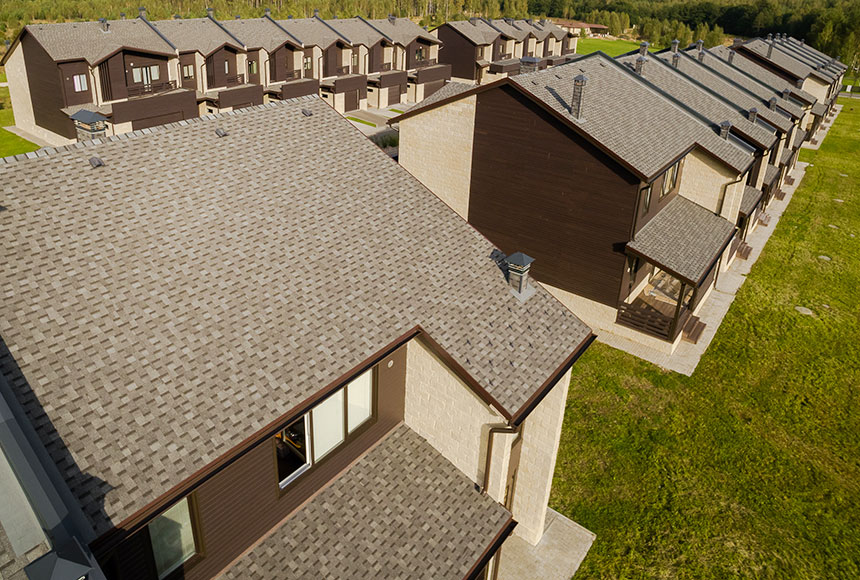
There are, however, some drawbacks to shingle roofs. Although they can be long-lived, there are other roofing materials, such as ceramic tiles and slate, that can outlast shingle roofs based on average environmental conditions. Although some shingle materials and colors can be somewhat reflective, particularly if the colors used are lighter, shingles tend to retain heat, a problem if a roof is under-insulated and allows heat to radiate into surrounding living spaces during warmer periods. Shingles are also not considered completely ecologically friendly products due to their reliance on petroleum to produce the bitumen – raw material for the shingles, and because they are relatively difficult to recycle.
Metal roofing – advantages, disadvantages
Metal roofs have some distinct advantages as a roofing material. First, they are one of the longest-lasting materials, with lifespans ranging from 40 years for galvanized steel to almost 200 years for copper. A longer lifespan leads to lower costs for roofing replacement. Second, they are relatively low maintenance if properly installed and do not require any additives or further coating to preserve their properties. Thick metal roofs are also exceptionally durable, with properly installed, quality metal roofs being resistant to corrosion, algal growth, fire and even lightning as electromagnetic radiation will be transmitted away from the house by lightning rods. Metal roofs are considered to be one of the more, if not most, ecologically conscious materials. Also, metal roofs are often made nearly or entirely from recycled metals, helping to reduce waste.
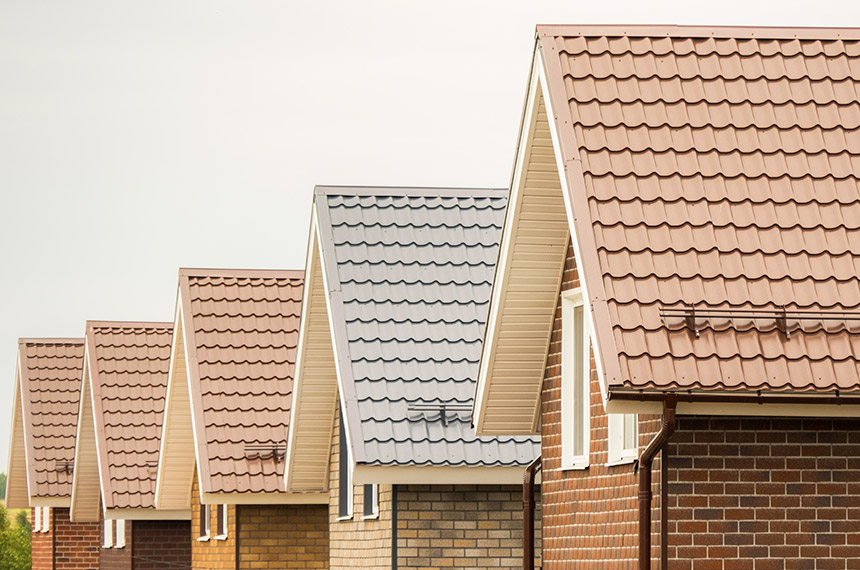
There are disadvantages to metal roofs. If struck by debris or falling tree limbs, lower gauge metal can potentially dent, causing reductions in the performance of the roof and potentially leading to replacement. Given the size of metal sheeting, it is much more difficult to transport and install than roofing that uses smaller materials, such as asphalt shingles or clay tiles. The bigger drawback is that metal roofs, in general, are much noisier during rain or storms. There also may not be as much flexibility in finding roofing that matches the color of one's home, especially if replacement is needed for damaged metal sheeting. Sheets for metal roofs are manufactured in large, which results in a significant amount of wastes – up to 40% on complex geometry roofs. In addition, the wind resistance of big metal sheets is among the crucial problems. Metal sheets fade in bright sun, and not always evenly. In hot weather, the metal undergoes thermal deformation and heats up to a high temperature, which creates the discomfort of living under such a roof.
Conclusion
As noted, there are advantages and disadvantages to both metal and shingle roofs. Both roofing styles are more advantageous than not, given their popularity as roofing materials. For durable and lightweight shingle options that can accommodate a variety of style and design preferences, TECHNONICOL offers roofing shingles that outlast and outperform.
Back to blog list